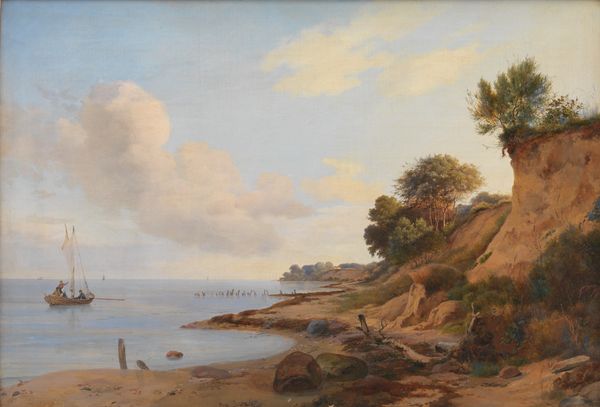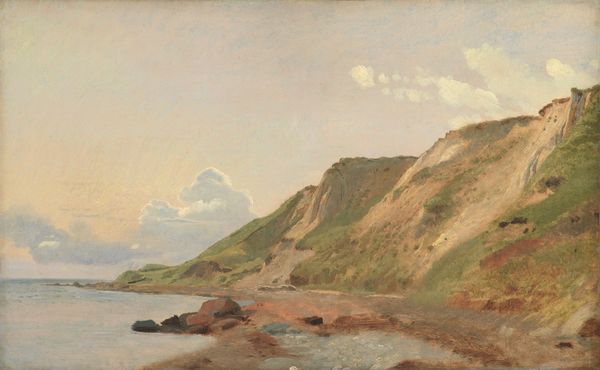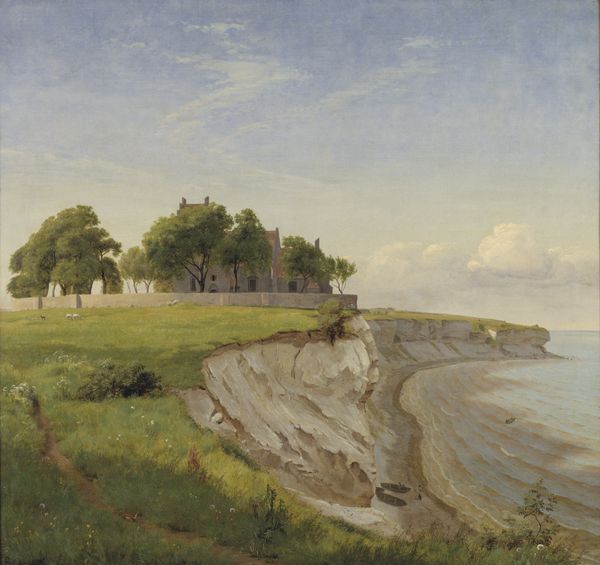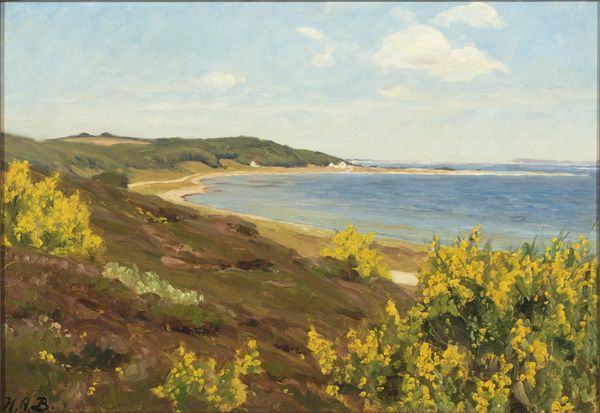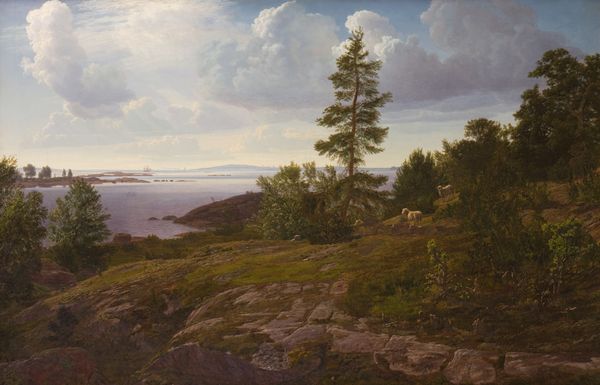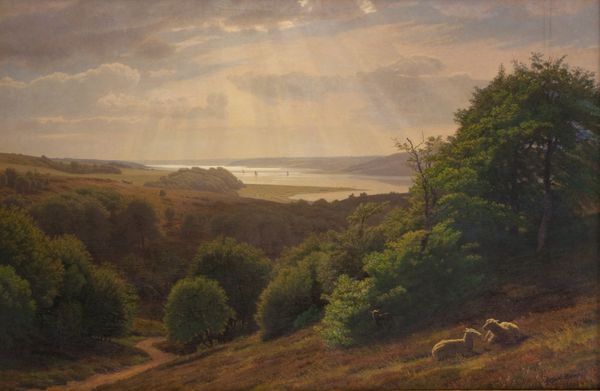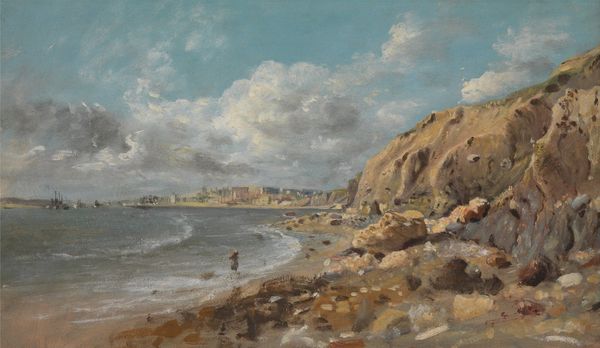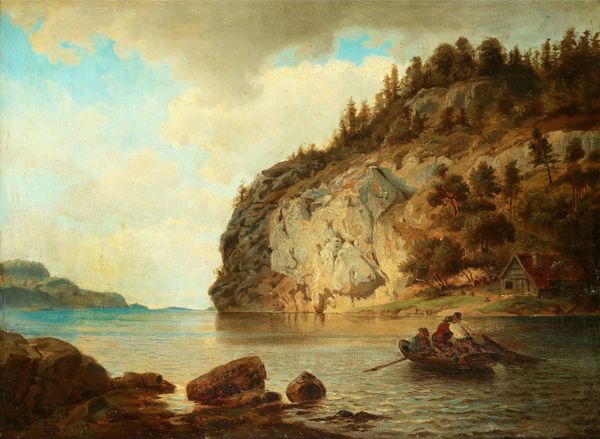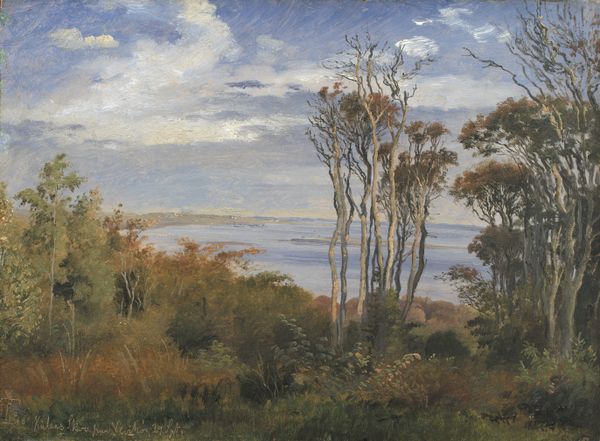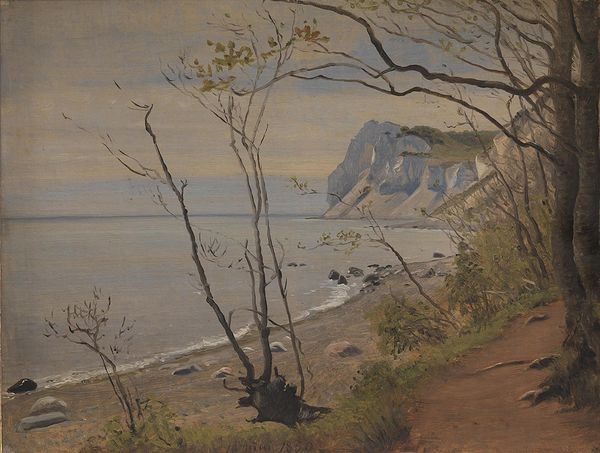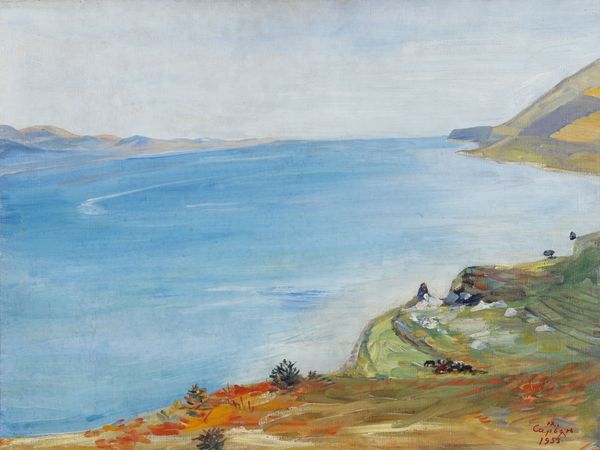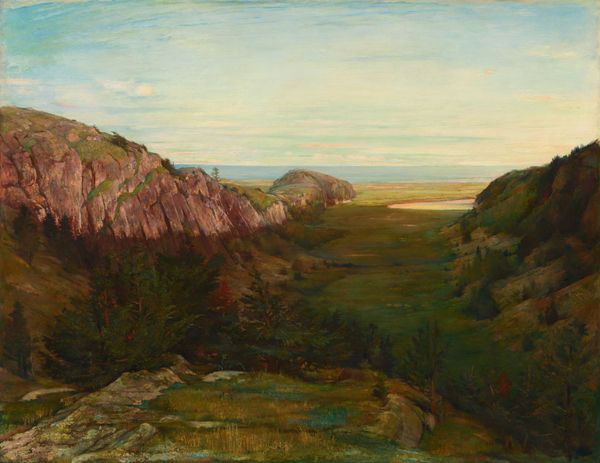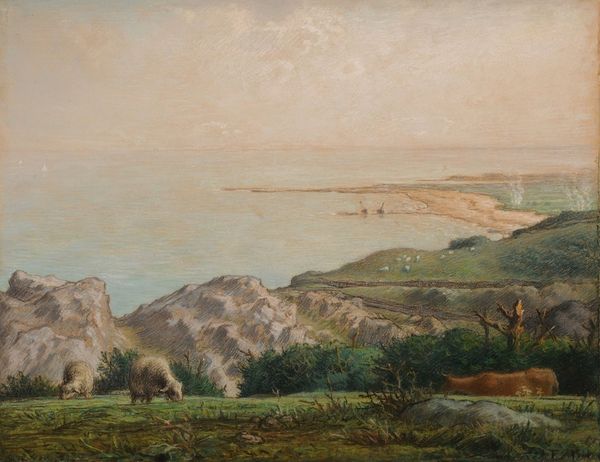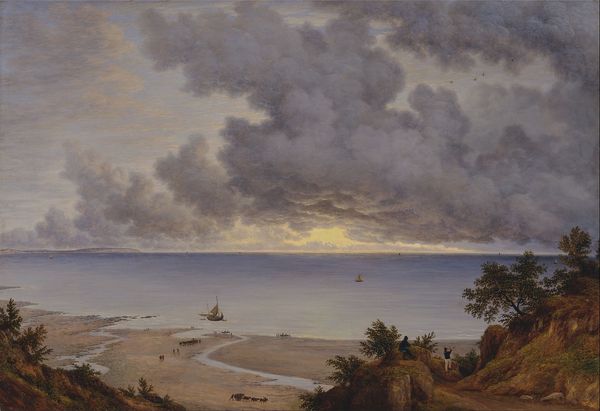
A Danish Coast. View from Kitnæs on Roskilde Fjord. Zealand 1843
0:00
0:00
painting, plein-air, oil-paint, canvas
#
painting
#
plein-air
#
oil-paint
#
landscape
#
oil painting
#
canvas
#
romanticism
#
seascape
#
academic-art
#
realism
Dimensions: 188.5 cm (height) x 255.5 cm (width) (Netto), 203.9 cm (height) x 271.2 cm (width) x 8.8 cm (depth) (Brutto)
Johan Thomas Lundbye made this monumental painting of the Danish coast using oil on canvas. Lundbye carefully built up layers of paint to capture the texture and light of the Zealand landscape. Look closely, and you’ll notice how Lundbye’s brushstrokes vary to depict different elements: soft, blended strokes for the sky and water, and more defined strokes for the rocks and vegetation. The painting’s scale invites the viewer to step into the scene. The artist’s choice of oil paint, a traditional medium for landscape painting at the time, reflects his engagement with the prevailing artistic conventions. But rather than simply replicating nature, Lundbye used his skill with the material to convey a sense of national pride and connection to the Danish landscape. By emphasizing the materiality and process behind the painting, we can see how Lundbye transformed ordinary materials into a powerful expression of cultural identity. This reminds us of the immense labor and skill involved in creating artworks that shape our understanding of the world.
Comments
statensmuseumforkunst almost 2 years ago
⋮
The concepts of "nation" and "people" were avidly discussed during the 1830s and 1840s. J.Th. Lundbye was particularly influenced by the art historian N.L. Høyen’s (1798-1870) programme for Danish painting and its contributions to building national pride and self-awareness. The coastline as characteristic of the Danish countryside When, in 1842, he decided to depict a Danish coastline in an unusually monumental format, the scene was to represent the quintessential characteristic of the Danish countryside: the extensive coastlines. The scene does not, in fact, depict a single, specific site, the main motif is based on cliffs that the artist saw and sketched at the Roskilde Fjord. He adapted these cliffs,making them rather more monumental, and combined them with scenes from elsewhere. The painting's hidden autobiographical commentary Work progressed slowly due to Lundbye’s characteristic self-doubt and scruples, but also as a result of interference from several selfappointed advisors, including Høyen. The artist was frustrated by his tendency to overdo details such as the vegetation in the foreground or a single cloud, and he remarked on this ineffectualness by painting a hidden autobiographical commentary in the centre of the picture where two men stand by a cart: "I am like that cart,my dear friend. A wheel is broken and now I can proceed no further; the other turns as ever,but cannot serve to move the cart one inch."
Join the conversation
Join millions of artists and users on Artera today and experience the ultimate creative platform.
